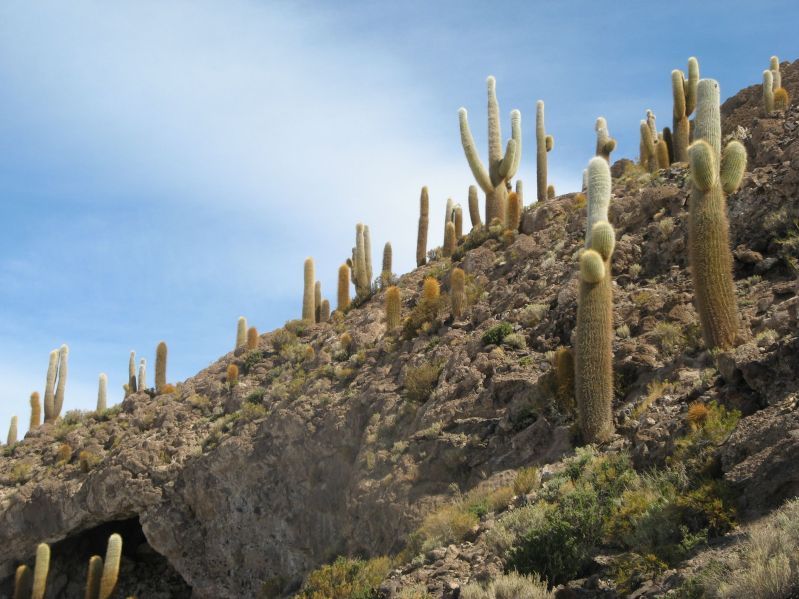There are two things one should know about the Atacama desert. First, it is the driest place on Earth. It never rains. So there is no plant, no oasis and no village on few hundred km radius. Second, there are no roads (in the Bolivian side of the desert) so it’s better to come with a vehicle that will make it. (everybody else had Land Cruisers)
This is what we know now. Before, having no idea about how harsh it will be, we thought there will be no problem. But with a motorcycle weighing 400kg with pax and luggage and with 50-50 tires it is not that easy. I think we fall over 100 times during one day. Also, we had no working GPS (it stopped working while waiting in Nazca) so we had to rely on the map and compass (but how useful might be a map in the desert?). The only orientation we had was some tracks in the sand and compass to guess where the tracks might be leading.
Speed was very low, usually bellow 20km/h. Since the total length of the portion with no roads is over 500km, we had to spend a few nights. First night we were lucky enough to find San Pedro, a small village close to Salar Uyuni (in the second pic you can see how we refueled). But when the dark came during the second day, we were nowhere near shelter, had no idea how far away from Laguna Colorada and whether the heading was good. Gasoline was depleting fast. So we decided to camp, close to a big rock. Our tent is a three season type and given the high altitude (over 3600m) the temperatures dropped bellow zero during night. We had to remove the clothing and stay close one to each other and under the sleeping bag in order to conserve heat.
The next day some tourists came with their guide to see the rocks and we got directions. After this, Laura said she wants to never see sand again. I think it was just challenging :).
Tags: train offroad
